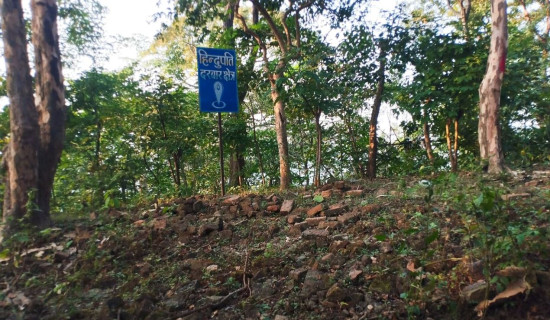- Friday, 28 November 2025
Growth Sags In Provinces
With the country plunging into recession, it is not surprising to see its tentacles gripping the economy at sub-national level. The federal government has already lowered the growth target. The official data puts economic growth at 2.16 per cent in basic prices and 1.86 per cent in producer prices in current fiscal year. The macro economy is bound to shrink owing to the tighter monetary policy, soaring inflation, import restriction measures of the past and widening trade deficit, among others. The federal government is mulling to adopt austerity measures to fight the negative growth. The concerned ministries and officials are busy setting priorities and goals for the upcoming budget. However, they are obliged to take the current economic situation into account. It is imperative for them to make inquiry as to why provinces are faring poorly in terms of economic growth and implementation of important projects.
A fresh data of the National Statistics Office (NSO) has projected provincial economic growth at 1.86 per cent, a scenario that bodes ill for the sustained economic recovery in the aftermath of crippling impact of COVID-19 pandemic. Of the seven provinces, three are performing below the national average of 1.86 per cent. Bagmati Province, which has been the hub of economic activities, is projected to have only 1.4 per cent growth in the current Fiscal Year 2022/23. Last year, its growth rate stood at 6.3 per cent. Madhes and Sudurpaschim provinces are expected to make 1.7 per cent and 1.8 per cent growth respectively against the last year's 4.6 and 4.8 per cent. Gandaki province is likely to achieve 3.3 per cent, the highest growth among the provinces. Koshi, Lumbini and Karnali are going to attain 2.0 per cent, 2.1 per cent and 1.9 per cent, respectively, according to a news report published in this daily on Wednesday.
Decrease in trade, construction and industrial activities have been attributed to the pathetic economic scenario of the provinces, especially that of Bagmati Province. Manufacturing, construction, and wholesale and retail trade form the major components of economic engine. But, they have suffered a loss of more than 2 per cent in their value addition. The Bagmati Province contributes 37 per cent to the GDP. Its lackluster performance has direct implications for the national fiscal system. Agriculture has played an important role in the economy of the most of the provinces except in Bagmati. Other contributing sectors include real estate, service and public administration. The contribution of provinces to the national economy is also asymmetrical, a reason behind the decline of overall growth.
In order to strengthen the provincial economy, it is necessary for the judicious application of fiscal federalism that stresses efficiency, regional balance and political stability. It aims to sort out the conflict between the national and sub-national governments over the sharing of natural resources and national income. The constitution has clearly outlined the distribution of powers, rights and resources between the three layers of government. In addition, the legal instruments such as Local Governance Operation Act (2017), National Natural Resource and Fiscal Commission Act (2017), and Intergovernmental Financial Management Act (2017) consist of provisions on fiscal transfers, revenue sharing, revenue from local taxes, and exclusive and concurrent tax rights among provincial and local governments. Provinces constitute vital organs of federalism that Nepal adopted with the promulgation of new constitution. It seeks to overcome the structural imbalances created by the unitary system. Provinces can prosper with the effective implementation of constitutional, legal and economic provisions.

















